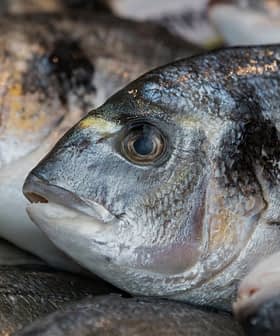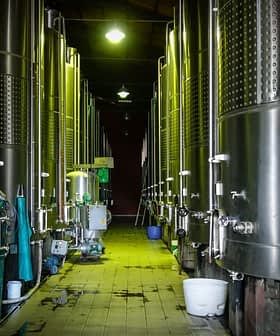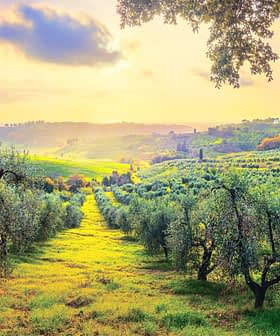Europe’s Evolving Fight Against Xylella Fastidiosa
Early detection across the European Union remains at the forefront of the struggle against the bacterium as officials are hopeful about new research, methods and tools.
 Puglia, Italy (AP)
Puglia, Italy (AP) Extreme weather, including hailstorms, has caused significant losses for olive growers in southern Italy, with approximately 40 percent of the olives for the current season lost in the Puglia region. The European Food Safety Authority (EFSA) is playing a crucial role in coordinating efforts to combat the Xylella fastidiosa outbreak in the region, with new tools and research showing promise in curbing the spread of the pathogen.
Extreme weather has heavily impacted olive growers in southern Italy. In the last few days, sudden and violent hailstorms hit olive groves in Salento, in the Puglia region.
According to the farmers organization Coldiretti, approximately 40 percent of the olives for the current season were lost in the area.
Xylella is a global phenomenon, not merely European. Thanks to the advances in scientific research… we are seeing significant progress.
In the last decade, olive farms around Salento have been devastated by Xylella fastidiosa. New groves in the area are planted with Leccino and Favolosa, the two olive cultivars that show significant resistance to the bacteria.
“New resistant olive trees need three or four years to produce olives,” Coldrietti wrote. “And now that some olive growers can go back to harvesting the fruits after ten years of epidemic, there we go with another loss due to extreme events such as hailstorms, tornados and cloudbursts.”
See Also:Art Exhibition Reflects on Xylella’s Devastating ImpactThe challenging situation in Puglia was among the focal points of the Fourth European Conference on Xylella, organized by the European Food Safety Authority (EFSA).
Xylella fastidiosa
Xylella fastidiosa is a gram-negative bacterium that is known for causing a variety of plant diseases. It is a pathogen that primarily affects the xylem, which is the plant tissue responsible for transporting water and nutrients from the roots to other parts of the plant. Xylella fastidiosa is a significant concern in agriculture and forestry because it can infect a wide range of plant species, leading to economic losses and environmental damage.
This bacterium is transmitted by insect vectors, such as sharpshooters and spittlebugs, which feed on plant sap. When these insects feed on infected plants, they acquire the bacterium and can then transmit it to healthy plants when they feed on them. Xylella fastidiosa can infect both agricultural crops and ornamental plants, and it has been responsible for devastating diseases in various parts of the world.
Some of the well-known diseases caused by Xylella fastidiosa include Pierce’s Disease, Citrus Variegated Chlorosis (CVC) and Olive Quick Decline Syndrome (OQDS).
Efforts to control Xylella fastidiosa include the use of insecticides to manage the insect vectors, as well as efforts to quarantine and remove infected plants to prevent further spread. Research is ongoing to develop more effective strategies for managing and preventing the spread of this bacterium and its associated plant diseases.
EFSA plays a crucial role in the scientific coordination of the operations against Xylella fastidiosa and supports the European Commission and member states in establishing procedures, guidelines and methods.

Participants at the Fourth European Conference on Xylella, organized by the European Food Safety Authority
Ahead of the conference, the documentary movie “The Era of the Giants” was presented to the delegates. It investigates the social, economic and landscape impacts of Xyella fatidiosa in a region where the monumental olive trees had thrived for millennia.
“That is very significant, as it allows the European public to witness the devastating impact of the pathogen,” Giuseppe Stancanelli, EFSA’s plant health risk assessment team leader, told Olive Oil Times.
“Communication to the public is a key factor to ensure the success of plant health strategies,” Stancanelli added, hinting at the comic strip recently published by EFSA.
“It stresses the importance of science in developing strategies to deal with plant health threats, such as Xylella,” he said.
In collaboration with the European Commission and member states, EFSA also launched the #PlantHealth4Life campaign.
“The goal is to raise European citizens’ awareness about the importance of plant health and everyone’s responsibility to safeguard it,” Stancanelli said.
In the E.U., Italy is not the only country affected by Xylella fastidiosa. Other strains of the bacteria have been found in the Balearic Islands of Spain, Portugal and France. Insect vectors such as spittlebugs carry the pathogen from one plant to the next, infecting olive trees, almonds and dozens of other plant species.
Over the years, the Xylella fastidiosa outbreak, coupled with the growing understanding of the threat represented by the epidemic, spurred an array of E.U.-wide activities.
“Xylella is now included in the list of the main quarantine plant pathogens maintained at the E.U. level, the so-called Priority Pests,” Stancanelli said. “That brought all member countries to develop preventive contingency plans and to intensify surveillance.”
EFSA maintains the only global database of plants infected by the different Xylella fastidiosa strains.
“That supports member states in case of new outbreaks,” Stancanelli said. “It is also useful for local institutions and farmers to decide what to plant in infected areas. It also reports the varieties of plants which showed tolerance or resistance to Xylella.”
According to the conference’s conclusions, current means to curtail the spread of Xylella fastidiosa are improving as new tools are developed.
“Xylella is a global phenomenon, not merely European,” Stancanelli said. “Thanks to the advances in scientific research, new tools that allow the detection over extensive areas and advanced pest control strategies, we are seeing significant progress.”
“At the conference, it emerged how knowledge about the biology and the ecology related to the vector insects is growing,” Stancanelli said. “Not only in the Mediterranean area but also in Northern Europe.”
Current research funded by the E.U. includes work on prevention, control, ecology and society, such as the BEXYL project, as well as the development of new biocontrol solutions acting either against Xylella fastidiosa or its vector, such as the BIOVEXO project.
BEXYL and BIOVEXO co-organized the Xylella conference in collaboration with EFSA and other E.U. projects.
A large part of the efforts funded by the E.U. goes into fostering collaboration and coordination among the many national entities involved.
Key to the E.U.’s strategies is early detection. “With EFSA scientific support, all European countries are monitoring their whole territory,” Stancanelli said.
Extended monitoring operations follow EFSA guidelines and can spot new outbreaks. That allows for a quick intervention to contain further spreading.
“Significant progress has been made in the survey and monitoring systems and diagnostics, such as those for analyzing aerial and satellite images,” Stancanelli said.
“For example, if we need to monitor all of the olive farming areas in the Mediterranean region, we cannot rely on on-field visits only,” he added. “We need to be able to analyze large portions of the territories all at once. Now that technology is available.”
Other crucial aspects debated at the conference include those olive varieties that show tolerance or resistance to Xylella fastidiosa, such as Leccino.
“There is progress in the research aiming to uncover the mechanism of such resistance,” Stancanelli said. “It is of great interest, as unlocking these aspects can also allow us to find those mechanisms in other olive cultivars.”
Since it was first tried in Puglia, the grafting methods can pave the way to identify new sources of resistance to Xylella.
“In Israel, where Xylella attacked almonds, researchers identified resistant almond varieties by grafting them over infected plants, rootstocks, and observing their responses,” Stancanelli said.
“All over the world, Xylella has become a priority plant pathogen,” he concluded. “Today, scientific research and international coordination allow us to see hope in the struggle against the pathogen.”
Share this article










